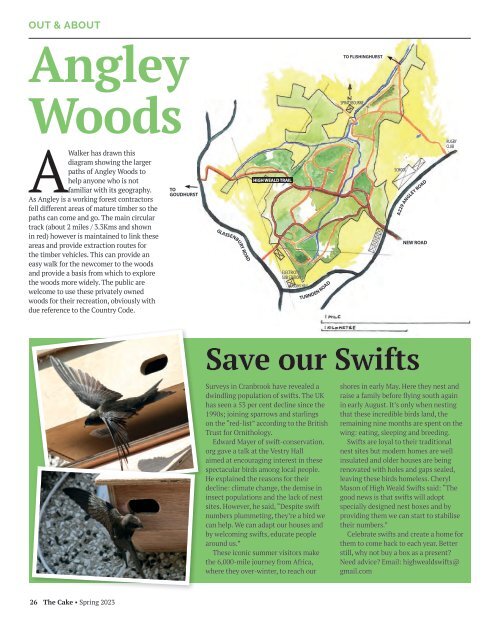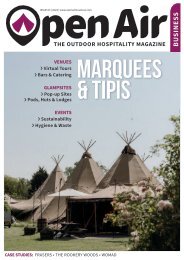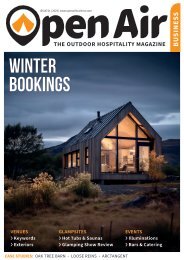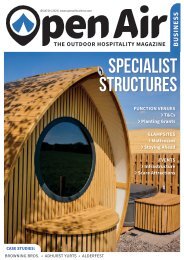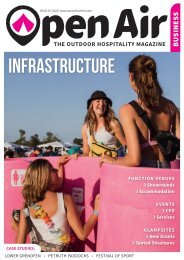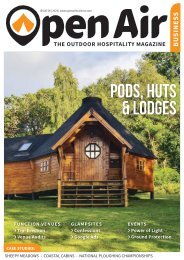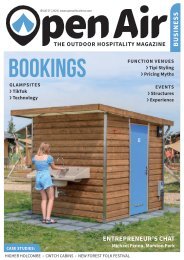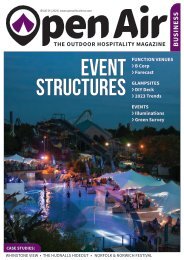Spring 2022
A slice of Cranbrook and Sissinghurst life
A slice of Cranbrook and Sissinghurst life
Create successful ePaper yourself
Turn your PDF publications into a flip-book with our unique Google optimized e-Paper software.
OUT & ABOUT<br />
Angley<br />
Woods<br />
TO FLISHINGHURST<br />
SPRATSBOURNE<br />
A<br />
Walker has drawn this<br />
diagram showing the larger<br />
paths of Angley Woods to<br />
help anyone who is not<br />
familiar with its geography.<br />
As Angley is a working forest contractors<br />
fell different areas of mature timber so the<br />
paths can come and go. The main circular<br />
track (about 2 miles / 3.3Kms and shown<br />
in red) however is maintained to link these<br />
areas and provide extraction routes for<br />
the timber vehicles. This can provide an<br />
easy walk for the newcomer to the woods<br />
and provide a basis from which to explore<br />
the woods more widely. The public are<br />
welcome to use these privately owned<br />
woods for their recreation, obviously with<br />
due reference to the Country Code.<br />
TO<br />
GOUDHURST<br />
GLASSENBURY ROAD<br />
HIGH WEALD TRAIL<br />
ELECTRICITY<br />
SUB STATION<br />
HUGGINS HALL<br />
TURNDEN ROAD<br />
SCHOOL<br />
A229 ANGLEY ROAD<br />
NEW ROAD<br />
RUGBY<br />
CLUB<br />
Save our Swifts<br />
Surveys in Cranbrook have revealed a<br />
dwindling population of swifts. The UK<br />
has seen a 53 per cent decline since the<br />
1990s; joining sparrows and starlings<br />
on the “red-list” according to the British<br />
Trust for Ornithology.<br />
Edward Mayer of swift-conservation.<br />
org gave a talk at the Vestry Hall<br />
aimed at encouraging interest in these<br />
spectacular birds among local people.<br />
He explained the reasons for their<br />
decline: climate change, the demise in<br />
insect populations and the lack of nest<br />
sites. However, he said, “Despite swift<br />
numbers plummeting, they’re a bird we<br />
can help. We can adapt our houses and<br />
by welcoming swifts, educate people<br />
around us.”<br />
These iconic summer visitors make<br />
the 6,000-mile journey from Africa,<br />
where they over-winter, to reach our<br />
shores in early May. Here they nest and<br />
raise a family before flying south again<br />
in early August. It’s only when nesting<br />
that these incredible birds land, the<br />
remaining nine months are spent on the<br />
wing: eating, sleeping and breeding.<br />
Swifts are loyal to their traditional<br />
nest sites but modern homes are well<br />
insulated and older houses are being<br />
renovated with holes and gaps sealed,<br />
leaving these birds homeless. Cheryl<br />
Mason of High Weald Swifts said: “The<br />
good news is that swifts will adopt<br />
specially designed nest boxes and by<br />
providing them we can start to stabilise<br />
their numbers.”<br />
Celebrate swifts and create a home for<br />
them to come back to each year. Better<br />
still, why not buy a box as a present?<br />
Need advice? Email: highwealdswifts@<br />
gmail.com<br />
26 The Cake • <strong>Spring</strong> 2023


